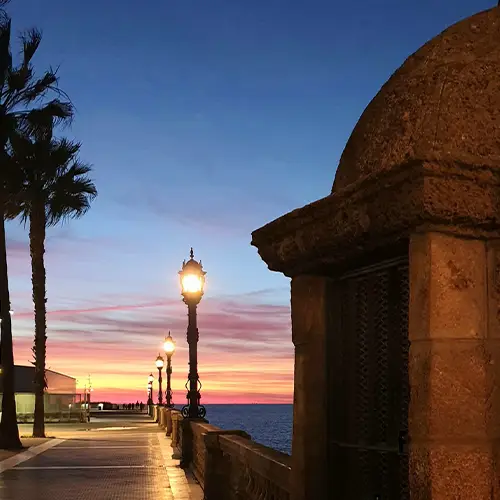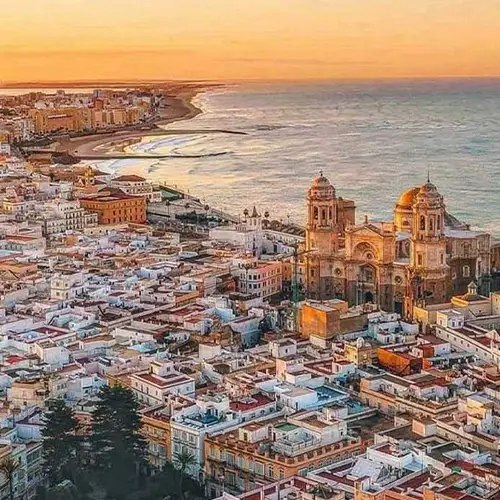The province of Cádiz borders the provinces of Seville and Huelva to the north, the province of Malaga to the east, the Atlantic Ocean to the southwest, the Mediterranean Sea to the southeast, and the Strait of Gibraltar and the British colony of Gibraltar to the south, and is located only 14 km from Africa. The most important thing is to visit the city of Cádiz itself and the capital of the province, well protected within its walls.
The Phoenicians, Greeks and Romans populated this province and left important evidence of their presence along the entire coast of Cadiz. The city is considered the oldest in Europe and was founded by the Phoenicians as early as 1104 BC.
In our time, the Moors fortified the city between 711 and 1262 and gave it the name it has today – “Qãdis” after defeating the Visigoths at the Guadalete River.
During the Age of Discovery, the city experienced a renaissance and Christopher Columbus set out from Cádiz on his second and fourth voyages and it eventually became the base of the Spanish treasure fleet. In the 18th century, sandbanks in the Guadalquivir River led the government to move the monopoly of trade with Spanish America from Seville to Cádiz, which had free access to the Atlantic Ocean. During this time, the city experienced a golden age when three quarters of Spanish trade with the Americas passed through the city. Cádiz quickly became one of the richest cities in Spain and many of the city’s historic buildings date from this period. In 1812, the first Spanish constitution was signed here, making the city the capital for three years.
During the Age of Discovery, the city experienced a renaissance and Christopher Columbus set out from Cádiz on his second and fourth voyages and it eventually became the base of the Spanish treasure fleet. In the 18th century, sandbanks in the Guadalquivir River led the government to move the monopoly of trade with Spanish America from Seville to Cádiz, which had free access to the Atlantic Ocean. During this time, the city experienced a golden age when three quarters of Spanish trade with the Americas passed through the city. Cádiz quickly became one of the richest cities in Spain and many of the city’s historic buildings date from this period. In 1812, the first Spanish constitution was signed here, making the city the capital for three years.



The old town of Cádiz really bears the mark of a golden age with beautiful buildings and large cathedrals. Here you will find everything you could want in terms of restaurants and other amenities, well integrated into the city’s narrow alleys. On this peninsula you are also never far from the city’s own beach, Victoria Beach, from where you can also watch the sun disappear into the Atlantic Ocean.
The province of Cadiz is very diverse and contains many places that are well worth a visit, from the countryside around Jerez de la Frontera, the white villages or stopping to relax somewhere along the coast between Tarifa and Sanlúcar de Barrameda. Furthermore, the 260 km long Atlantic coast offers a number of beautiful beaches with fine sand, many of them undeveloped and not excessively exploited for tourism. The entire coast is part of what is called the Costa de la Luz. See more highlights below!
FROM CASA COCOON TO CÁDIZ IS 2,5 HRS. BY CAR.
Cadiz, located on the southwestern coast of Spain, is a vibrant and historic city known for its beautiful beaches, rich maritime heritage, and lively atmosphere. Here are some of the highlights of Cadiz:
Cadiz’s combination of history, beaches, gastronomy, and lively traditions make it a captivating destination. Whether you’re seeking relaxation on the beach, exploring its cultural heritage, or immersing yourself in its vibrant festivities, Cadiz has something to offer for every visitor.
FROM CASA COCOON.